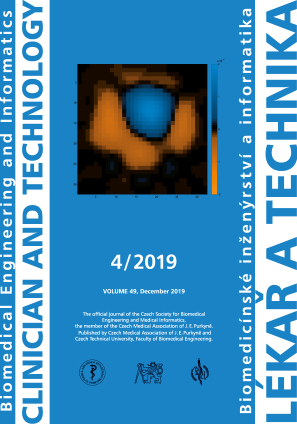METHODS FOR KINEMATIC ANALYSIS OF HUMAN MOVEMENT IN MILITARY APPLICATIONS: A REVIEW OF CURRENT AND PROSPECTIVE METHODS
DOI:
https://doi.org/10.14311/CTJ.2019.4.04Keywords:
soldiers, kinematic analysis, gait, posture, body motion, armyAbstract
Expansion of methods employed in the kinematic analysis of human movement for diagnosing of the physical and mental health of subjects can be traced back to the 1990`s when new information technologies and electronic recording systems started their development boom. Evaluation methods of body movement for the diagnostics of physical and mental health expanded significantly in clinical practice. This study presents an overview of these methods with the focus on how applicable the analysis of human movement can be in military practice, where they are currently marginally used. The aim of this study is to offer some recommendations on how particular methods could be utilized in an army context. This article also suggests the most appropriate methods of quantitative evaluation for posture and motion control in the course of standing, gait and other activities carried out in military training and active duty.
Downloads
Published
Issue
Section
License
Copyright (c) 2020 Petr Volf

This work is licensed under a Creative Commons Attribution 4.0 International License.
Authors who publish with this journal agree to the following terms:
- Authors retain copyright and grant the journal right of the first publication with the work simultaneously licensed under a Creative Commons Attribution License (https://creativecommons.org/licenses/by/4.0/) that allows others to share the work with an acknowledgment of the work's authorship and initial publication in CTJ.
- Authors are able to enter into separate, additional contractual arrangements for the non-exclusive distribution of the journal’s published version of the work (e.g., post it to an institutional repository or publish it in a book), with an acknowledgment of its initial publication in this journal.
- Authors are permitted and encouraged to post their work online (e.g., in institutional repositories or on their website or ResearchGate) prior to and during the submission process, as it can lead to productive exchanges.
CTJ requires that all of the content of the manuscript has been created by its respective authors or that permission to use a copyrighted material has been obtained by the authors before submitting the manuscript to CTJ. CTJ requires that authors have not used any copyrighted material illegally, as for example a picture from another journal or book, a photo, etc. It is the author’s responsibility to use only materials not violating the copyright law. When in doubt, CTJ may ask the authors to supply the pertinent permission or agreement about the use of a copyrighted material.
The opinions expressed in CTJ articles are those of authors and do not necessarily reflect the views of the publishers or the Czech Society for Biomedical Engineering and Medical Informatics.


